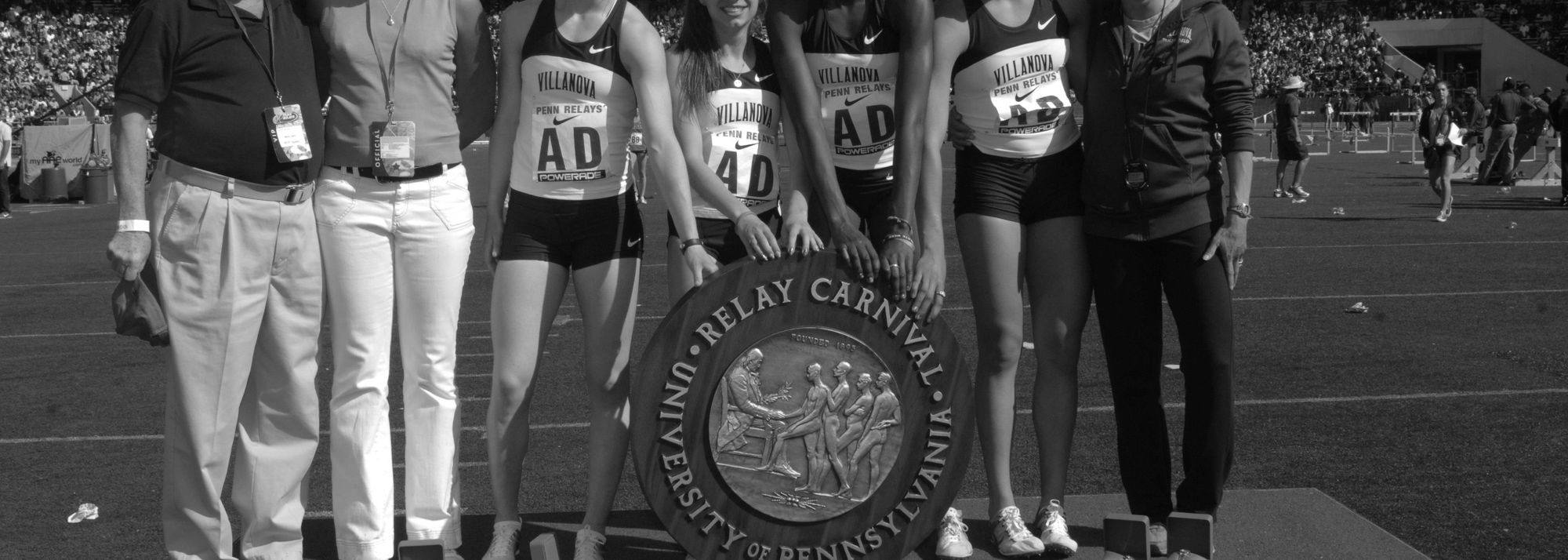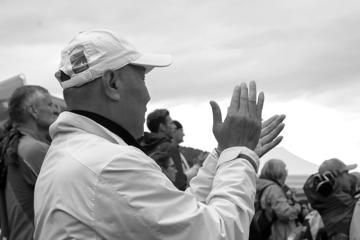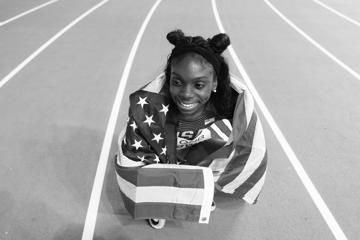Penn Relays
I’ve been there as an athlete, a coach, a fan.
As a teenager, I remember meeting people at the Penn Relays who’d tell you they’d been there every year for 40 years, never missing a single one.
That seemed crazy to me back then, but recently I realized something: I’m now one of those people. Since 1979, it’s the one event I’ve never missed.
It’s a one-of-a-kind meet: the oldest, largest track meet in the US, dating back to 1895. High school, college and professional athletes all sharing the same stage – race after race being run off at lightning speed.
Having grown up just outside Philadelphia, the Penn Relays felt like everything ever since I took up track at the age of 14. I remember my first time there: I was one of thousands of high school kids jammed into a paddock area, waiting for the call-up.
My best result in high school was second in the open 1500. After three years at the University of Florida, I transferred to Villanova and as soon as I arrived, it was made clear how important the Penn Relays was.
Once the outdoor season began our coach, Marty Stern, would talk about nothing else. We won the distance medley relay in my final year and the following year, my first as a professional, I won the open mile.
That meant so much. Being local and growing up around the Penn Relays, you really, really wanted to win there.
The reason it’s so special is the crowd.
Franklin Field has a brick wall all the way around the track so the crowds are up above. As an athlete, it’s like you’re down in a bowl, an amphitheater, and the energy you feel is incredible. There are some die-hard Penn Relays fans and they really appreciate a good race.
So many different age groups and cultures blend together as one. There’s an entire Jamaican section on one side of the track and they bring so much energy, flags waving, voices in full flow.
In 2010 the atmosphere was next-level. That was the year Usain Bolt came to town.
I usually watch races from our Villanova section at the start of the back stretch and most years, it takes me a few seconds to walk up the ramp to get to my seat. But when Bolt was there, it took 20 minutes. If you got out of your seat that day, you would never get back.
Bolt came to run a leg of the 4x100m, and for those nine seconds the atmosphere was like nothing you’d ever seen.
When I look back on my favorite memories from Penn Relays, many are from my years there as a coach. In 1994 I started assistant coaching at Villanova and in 2000, I became head coach of the women’s team.
Villanova is known for its success in cross country as we’ve won the national championship nine times. But when we recruit, we like kids with speed: kids who can run well in middle-distance events and relays and have the aerobic capacity to develop in cross country.
There were many years early on when we didn't have success at Penn, but thankfully we’ve won a lot of wheels in recent years. The best memories are the days it was unexpected.
In 2013 we had two freshmen on our women’s 4x800m, with Kelsey Margey and Angel Piccirillo joining Nicky Akande and Emily Lipari. Our fastest leg prior to that race was a 2:06, but that day they split 2:06, 2:04, 2:04 and 2:02 to get the win and set a collegiate record in a great, competitive race with Oregon that went down to the wire.
In 2016 we had three freshmen – Bella Burda, Sammy Bockoven and Nicole Hutchinson – and a sophomore, Síofra Cléirigh-Buttner, on our 4x1500m team. No one expected them to win, and during the race we were a long way down on Georgetown and Oregon. But the final leg turned into a kicker’s race which allowed Síofra to catch up and she surprised them all with 200 to go.
Those are the special memories: the shock victories.
Penn can also be a great learning experience for athletes. I’ll often put freshmen on teams and they’ll watch the upperclassmen, follow their lead ahead of the race, and then the the next year the freshmen can move on and teach the ones behind them.
We have quite a few freshmen who won’t benefit from that experience this year, but it’s the seniors I feel for most.
There’s a lot that goes into your senior year and it’s such a shame how things have played out. At Villanova we like to celebrate our athletes’ graduation – the athletic department does a big dinner for them – and there’s a lot of things like that they won’t get to do.
It was all so abrupt. We had just returned to school after spring break and by the end of the week, the outdoor season was canceled, all classes went online and everybody was told to leave campus by Sunday.
Over the past few weeks we’ve been getting by as best we can. For the last 25 years as a track coach, I’ve travelled pretty much every weekend from March to June. We live in fast-forward, but now everything is on pause.
We have Zoom meetings every week to stay in touch as a team and every week I’ll invite on one of our prominent alumni: Olympians and NCAA champions. It’s not necessarily to talk about their successes, but the setbacks they had and what it took to get to that level.
It’s to try and give the current team a sense that, yes, this is a rough time, but here are people who’ve had a lot of success and here are some of the struggles they faced early on.
I tell athletes they should figure out how to come out of this better. A lot of them are still very young so they may be better athletes as fifth-year seniors; they have an opportunity now to get stronger.
We’ll eventually get back to the events we love and miss, meets like the Penn Relays. But for now I tell them all to have patience: this will pass.
Images courtesy of Penn Relays







